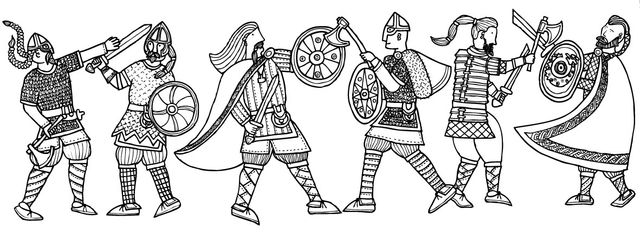1.2.2
Harold Godwinson's Succession
Harold Godwinson's Embassy to Normandy
Harold Godwinson's Embassy to Normandy
Harold made several moves before Edward the Confessor's death to make sure that he would become king after Edward died (Edward didn't have an heir).


Harold vs Tostig
Harold vs Tostig
- The Earl of Godwin died in 1053.
- Edward the Confessor died in 1066.
- Between these years, Harold Godwinson and Tostig Godwinson jockeyed for position to try to become the King of England once Edward died.


Harold's embassy to Normandy
Harold's embassy to Normandy
- In 1064, Harold led a group of representatives (called an 'embassy') on a trip to France to meet with William of Normandy.
- Historians know that the trip was requested by Edward the Confessor, the current King of England.
- Historians do not know what message was meant to be delivered.
- On the trip to deliver the message, Harold Godwinson was captured by Count Guy of Ponthieu, but William of Normandy supported him and freed him. The two built some form of relationship during this time.


Harold's reported oath
Harold's reported oath
- It is reported that Harold Godwinson also took an oath (a promise of loyalty) to William of Normandy during this time.
- The Normans would later claim that Harold Godwinson had said that William of Normandy could be the next King of England after King Edward.
- English sources do not agree (but the only attendees were Harold Godwinson and his men).


Significance of the embassy
Significance of the embassy
- The fact that Harold Godwinson was sent to speak to William of Normandy, potentially about the succession of King Edward, shows that King Edward trusted Harold politically and militarily.
- The meeting and the fact that its contents were kept secret, gave William of Normandy the chance to claim whatever he wanted. Whether or not it is true, he said the meeting agreed that he had the right to become the next King.
1Anglo-Saxon England & The Norman Conquest, 1060-66
1.1Anglo-Saxon Society
1.2Edward the Confessor & The Succession Crisis
1.3The Rival Claimants for the Throne
2William I in Power: Securing the Kingdom, 1066-87
2.1Establishing Control
2.2Causes & Outcomes of Anglo-Saxon Resistance
2.3The Legacy of Resistance to 1087
2.4Revolt of the Earls, 1075
3Norman England, 1066-88
3.1The Feudal System & the Church
3.2Norman Government
3.3The Norman Aristocracy
Jump to other topics
1Anglo-Saxon England & The Norman Conquest, 1060-66
1.1Anglo-Saxon Society
1.2Edward the Confessor & The Succession Crisis
1.3The Rival Claimants for the Throne
2William I in Power: Securing the Kingdom, 1066-87
2.1Establishing Control
2.2Causes & Outcomes of Anglo-Saxon Resistance
2.3The Legacy of Resistance to 1087
2.4Revolt of the Earls, 1075
3Norman England, 1066-88
3.1The Feudal System & the Church
3.2Norman Government
3.3The Norman Aristocracy
Unlock your full potential with Seneca Premium
Unlimited access to 10,000+ open-ended exam questions
Mini-mock exams based on your study history
Unlock 800+ premium courses & e-books